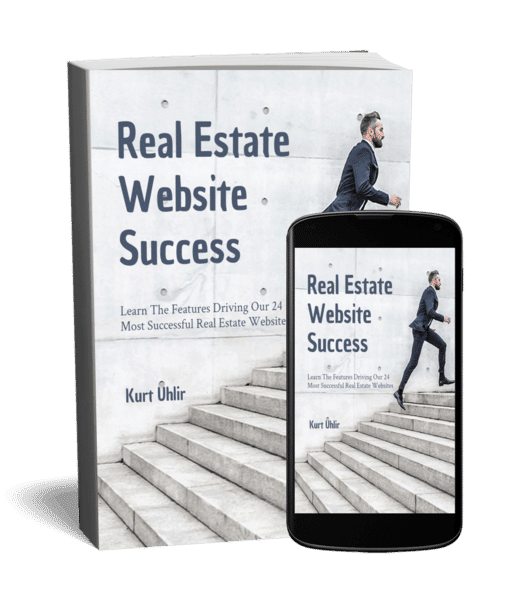Successful real estate websites must meet consumers’ expectations and help drive your business.
When building or updating your real estate website, you must first decide what success looks like for you and prioritize the goals you’d like your website to accomplish. How important is building a strong hyperlocal brand compared to generating new leads or helping to close existing leads into completed transactions?
Once you know your website goals, you can start implementing the features that every successful real estate website has. In this article, we’ll walk through the website features that our 24 most successful customers are using to grow their real estate businesses in 2020.
Successful real estate website features covered in this guide
- One Single Website
- Local Hotsheets and Community Pages
- Showcase Plan: Premium or Essentials
- Limited Registration Locks
- Registration Prompts on Listing Views and Search Results
- Requiring Registration to See Premium Listing Data
- Combining Hard and Soft Locks
- Streamlined VS Advanced Search Types
- Map style for Home Search
- No Budget or Shared Hosting
- An Off-the-Shelf WordPress Theme
Must-Haves for Successful Real Estate Websites
Your site serves as the main hub for any successful real estate marketing business today. It’s the digital face of your brand, and potential clients will vet you against other agents based off of their first impression of your site.
Here are the main components of what a successful website for real estate looks like:
- User-Friendly Design – Your website design can make or break the likelihood of your website users becoming clients. Ensure your real estate website is professional, easy to navigate, and clearly addresses any potential client needs.
- IDX-Integrated Home Search – As the primary reason visitors come to your site, modern home search is crucial to having a successful real estate website. The best real estate websites strike a perfect balance in function and form AND protect their clients’ personal information, which can be shared if they search for homes on Zillow, Trulia, or Redfin.
Mobile Functionality – The best sites do more than simply work on mobile, they shine! Over 50% of your website viewers will be doing so on their mobile devices, so it’s crucial that you don’t miss out on that chunk of potential buyers.

95% of home buyers visit real estate agents’ websites during their home search.
— The National Association of REALTORS®, 2018 Report
Pro Tip: When you create your IDX website with Showcase IDX, you’ll be able to put your site through a mobile-friendly test. This will let you know how your website looks on mobile devices and whether or not it works on mobile. This can give you the certainty that every mobile user coming to your site will have a great experience.

How to Analyze Real Estate Websites
Our unique place in the market allows us to examine tens of thousands of real estate websites, those powered by Showcase IDX, those with older IDX options, and even all-in-one solutions. As a marketing coach, I’m constantly looking at what other top marketers are doing to see how to apply the most effective practices.
Here are 3 ways I analyzed real estate websites (2 of them you can do)
1) BuiltWith:
This year alone, my team has analyzed over 100,000 real estate websites. Tools like BuiltWith let you see the public-facing technologies and marketing solutions used on a website. Want to know if a site has the Facebook marketing pixel installed, how about if it’s built on WordPress (almost all top sites are), or if uses Hubspot to track visits for email automation? All of that is easily available by simply entering the URL of a website.
If you have deeper technology expertise, there are other services with APIs that can provide you similar data at scale, but what I love about BuiltWith is that it allows non-technical people to easily get an idea about what is being used on an individual website.
2) View Source:
With a little more technical knowledge, you can inspect the source code for a website to learn even more things, such as what WordPress theme is being used, some of the plugins on the website (most plugins though are private and cannot be identified without admin access to the site), 3rd party software used, etc.
How to view source code for an individual website?
Using Chrome on a Mac, simply visit the website you would like to inspect, click View > Developer > View Source. Alternatively, right-click the page and look at the menu that appears. From that menu, click View page source.

3) Our Internal Data:
We partner with marketing agencies and web developers that build a single site per year to those that support tens of thousands of websites. For this guide, I looked at what IDX and home search settings our most successful clients are using.
We take our clients’ data and privacy extremely seriously and would NEVER expose the specific settings for individual clients, or even small groups of them. So, if you’re looking for what a specific site uses for their settings, I won’t be sharing that with you. If you’d like some insights into what I see from the most successful real estate websites, keep reading.
The results of examining our top 24 most successful customers confirmed many of my strategies, and a few of the results surprised me. This guide will give you some insights into things to try for your own website.
But first, let’s agree on what “successful” means.
What Qualifies as a Successful Realtor or Broker Website?
Some marketing agencies will try to tell you that any website that highlights your personal brand well is successful, but they’re missing the point of modern real estate marketing.
Whether you work primarily from referrals and past clients or if you’re primarily focused on new leads, your website must keep your clients on your site and not have them longing for the experience on Zillow or Trulia. We call it “leakage” if a qualified client leaves your site and goes to a large portal because they “leak” out of your sales funnel.
We’ve seen some outdated IDX solutions have leakage of 40% to as high as 90%. Imagine having 90% of strong referrals or leads you spent $25 CPA to acquire visit your landing page and then going to a portal that will share their info with competing agents.
Every website will have a “bounce rate” (the percentage of people that visit and leave. That rate will depend on the source of the traffic, but for a high-traffic site, a good bounce rate may be as high as 80%. We see much lower bounce rates in our top 24 websites.
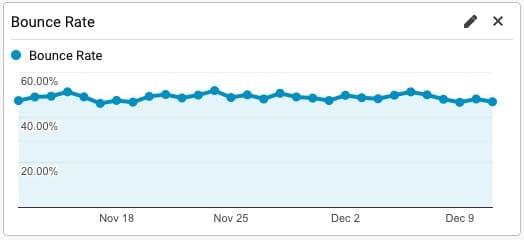
Here are 3 ways of tracking success from your website:
1. Your website needs to quickly give your clients a modern home search experience and must highlight your hyperlocal expertise.
Websites built by our trusted partners and powered by Showcase IDX do both of these. With a site from one of these partners (click here to become a partner), you are able to give your clients a modern home search experience.
And with our Friends and Family search, they can more easily coordinate with their family without having to use text/email or share logins. This helps to reinforce your value as a hyperlocal expert that can be trusted to keep their (and their families’) information confidential.
2. Your website must let you capture leads.
When a new visitor comes to your site, does your site use tools that incentivize people to enter their contact info?
In our top 24 websites, there are conversion rates from 0.02% – 5.56% (visitors that become leads), and I’ve seen rates from some clients that are significantly greater. However, we must remember that there is a balance to be considered here about what “best” looks like depending on your business and marketing strategy. There may be times when you’re more focused on building your personal brand and views/visitors matter more than sign-ups, and there are other times where you may be optimizing your marketing for something else like “total closings in a quarter”.
In the next section of this guide, I’ll show you what some of the IDX settings are that drive that leads to sign-up below. Keep reading.

3. Lastly, a successful real estate website must drive organic traffic from search engines over the long-term.
Unless you’re willing to simply buy leads for years to come, you want to create a lead generation machine, and start generating traffic from Google, Bing, Pinterest, and others to scale your business.
In our top 24 websites, the sites drive between 4,300 sessions per month to 30,000 sessions per month, with a substantial portion from organic and direct/referral traffic. If I sort by organic traffic only, 16 of the sites remain in the top 24.
For clients that I consult with on their real estate sites and coach to help grow their business, I’ve learned that “success” is relative and that the key to growth is acknowledging where each site is and taking the wise steps needed to achieve the next level in business growth. Don’t get distracted by someone else’s success. Most agents are not adequately investing in either their marketing or their websites. There is a huge opportunity for everyone at every stage.
Only 16.5% of real estate agents had success with purchased leads.
OutboundEngine Real Estate Marketing Benchmarks Report
Building organic traffic and good SEO is like compound interest, it takes a steady investment over time and the results get better and better. Many of these sites are also driving traffic because the agents 1) proactively setup custom search subscriptions for each client 2) show their clients how to use Friends and Family and 3) add regular local content each month.
What I’ve seen in my wider research this year is that it is almost impossible to rank a website well if an IDX uses iFrames or subdomains. The good news is that we hate iFrames and subdomains almost as much as Google does, so you won’t find them at Showcase IDX.
Remember though, generating organic leads takes work. Just like in the physical world, it takes work to knock on doors, attend local events, volunteer, make cold calls, etc. Ranking on Google takes works too. The good news is that this guide shows some incredible success stories and shows you what settings to use on your IDX.
Nine of the most successful agents in our top 24 websites are single agents. In order to have a successful website, you don’t have to be on a large team or be a broker.
I loved finding this in our data because it shows what I’ve been saying. Anyone can be successful, and it does not take spending thousands of dollars per month. Now, while I am a strong believer in investing in marketing to grow ANY business, many of these most successful sites were built by individual agents that simply carved out time each week/month to do the work to rank their sites.
In the long-term, organic traffic (what you get from Google/Bing/etc) is much cheaper than spending money on ads (paid media). Plus, what happens when you stop spending on ads? The traffic stops. The value of SEO (search engine optimization) is much closer to compound interest, where it only gets better over time.
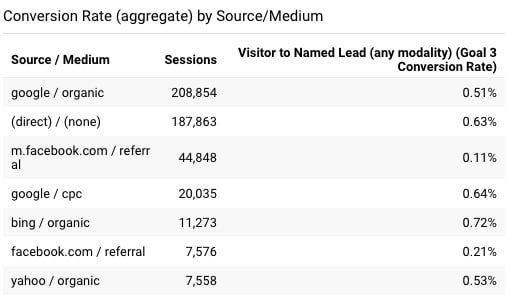
The Features and Settings of the Most Successful Real Estate Websites According to the Data
Let’s get into the fun and dig into the data. Some of these features and settings are contained within Showcase IDX and some are not.
Read through the list and you’ll see what website features and settings other agents are using to grow their business and what you may want to test on your website.
One Single Website
The vast majority of successful real estate agents only have 1 website. 19 out of our 24 most successful real estate websites are the ONLY site for that agent/broker/team. Of the other five, four had two sites, one had three websites, and none of those additional sites were in our most successful sites list.
This one didn’t surprise me. Years ago, SEOs (those that practice search engine optimization) would recommend you have multiple micro-sites that would all feed into a single site. Some marketing agencies will still try to tell agents they need dozens of sites, but if you hear that you should run, and our data confirms what Google says.
As far back as 2010, when microsites and blog networks started to become a more popular SEO tactic, Google posted on the Google Webmaster Blog that site owners wanting to create multiple sites should ensure each site had unique, quality content.
While you’re free to run as many sites as you want, keep in mind that users prefer to see unique and compelling content. It is a good idea to give each site its own content, personality and function. This is true of any website, regardless of whether it’s a single-page hobby-site or part of a large portfolio.
We suggest not spreading out your efforts too broadly, though. It can be difficult to maintain multiple sites while keeping the content fresh and engaging. It’s better to have one or a few good sites than a multitude of shallow, low value-add sites.
More recently, Google’s John Mueller (Webmaster Trends Analyst – basically their public-facing expert on what it takes to rank well), discussed how Google views the idea of microsites versus the one standalone site method.
The question in the hangout was about content silos, which Mueller interpreted as being about the practice of creating many microsites instead of a larger more comprehensive one for SEO purposes.
John’s response:
I’m not particularly sure what you mean with content silos. I assume this is something like creating niche sites or something general… generally like that where you create small websites that are focused on one specific topic.
From my point of view, that’s usually something we recommend against, just because it’s a lot easier for you to maintain things on one website, where things are kind of interconnected on one website. And it’s a lot easier for you to kind of build up that almost like brand awareness, I guess, with regards to your one website, compared to having like, all of these other different individual websites that are kind of connected to your main website but not really on your main website.
So for the most part, I’d recommend trying to focus on like a smaller number of websites and keeping everything together and kind of tying everything together in a reasonable way so that when users find your content, they can easily kind of move along that path to actually converting into whatever you want them to do, if you want them to buy something or sign up for something. Kind of make that as easy as possible so that when they go back to your content, they know what to find and what to do.
Focus your efforts on a single website. There are lots of ways to create individual landing pages, interest categories, and segment useful content within a single site. In the end, you’ll find it much more useful for the growth of your business to rank a single site than to rank even one site if you have multiple ones.
Hotsheets and Community Pages
This is probably the most important feature of building a successful real estate website.
What is a hotsheet? Hotsheets and community pages are individual pages on your site that focus on a single type of home, an individual condo building, homes within walking of a particular school, or any other refined interest that your clients may have.
Check out Demo & Associates for a few different examples of hotsheets.
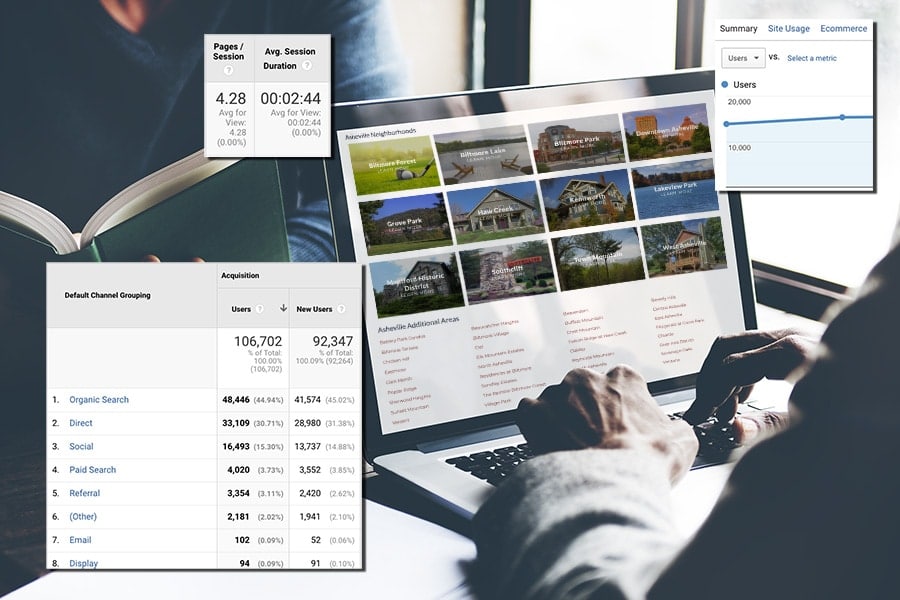
Quality Over Quantity
Before digging into the actual data, I would have told you that “more” was better, but as I’m continuing to see with Google Analytics (since their E-A-T update on expertise, authority, and trustworthiness), Google cares more about quality than quantity.
Of our top 24 websites:
- Four had 11 or less hotsheets, and one in the top 5 had only two.
- Three had between 12 and 99 hotsheets
- Eleven had between 100 and 499 community pages
- Two had 500 to 999 pages
- Only four had more than 1,000 pages.
Outside of our top 24 most successful customers, we’ve seen many customers do well by building hundreds and thousands of hotsheets on their sites. This is achievable by carving out a few hours every week to invest in writing content and adding a few new hotsheets.
Fresh Content
Research shows that websites with fresh content earn 88% more leads per month than static content. Hotsheets and community pages give your website a stream of fresh content that if done correctly will meet what a potential buyer/seller is searching for on Google, and Google is increasingly looking for content that meets “searcher’s intent”.
Target Your Niche
To rank well on Google, especially after Google’s more recent updates, I suggest building high-quality community pages and hotsheets that support the niche you’re focused on. Focus on providing quality content, written and/or video, on these pages.
Adding saved searches from Showcase IDX to the pages will ensure that Google sees regularly updated pre-rendered content on these pages and provide your visitors with home listing results they desire.
To support your advertising or outbound email/call marketing, create a hotsheet tailored for the individual persona you are targeting with each advertisement or reach out. The more your advertising message aligns with the landing page you’re sending them to, the higher your conversion rate will be because the visitors will find more value.
Showcase Plan: Premium or Essentials
Do you expect me to say you have to buy Premium to be successful?
You do NOT have to use the Premium version of our product to be successful.
While we see an incredible amount of success from the agents and brokers that use Premium as a whole, only ½ of the websites in our top 24 most successful use the Premium version of our product.
With that said, our top five most successful sites all use Showcase IDX Premium on their sites. The key is “how” they use it, and how they use it with the registration locks we’ll talk about later.
Limited Registration Locks
Within Showcase IDX, you can restrict certain information from visitors that they only see after registering or signing in. We call this feature a registration lock.
Here’s one example:

Even if you’re focused on brand building at this stage of growing your business in a specific real estate niche, you still need to capture visitors’ info at some point.
So, when should you prompt visitors to enter their name and contact info?
We see agents, teams, and brokers driving thousands of visitors and home search users every month regardless of if they’re using a registration lock.
Nine of the sites in our top 24 most successful sites use zero registration locks (neither hard locks or soft prompts).
They’re generating dozens of leads from other lead capture tools within Showcase IDX such as “asking a question about a property”, “schedule a tour”, inviting family or friends to collaborate on their search, etc.

Tip: Show your clients how they can use the Friends & Family tools to collaborate without using text/email to share properties and comments. This can lead to 1 – 5 additional potential leads from the single contact you may have in your CRM. It’s also a great way for clients to get a feel for their next home before they’re ready to actively start looking.
Registration Prompts on Listing Views and Search Results
After you’ve built up a strong flow of organic traffic or if you’re driving traffic from advertising, you’ll capture more leads by turning on some registration locks.
15 of our 24 most successful sites are using some form of registration locks.
All Showcase IDX plans include the ability to lock the maximum number of listing detail pages a visitor can view until they are prompted to register or sign in. This can be a soft prompt that the visitor can skip or a hard lock where the potential client cannot see any other listing detail pages until they register or sign in.

Here are some statistics on the usage of registration prompts:
- 7 of the top 24 sites uses a soft registration prompt when a visitor has seen a certain number of listings, and we see success with the prompt displaying every 5 to 25 listings. For the 15 that use some form of registration lock, 7 out of those 15 sites use soft registration prompts.
- 5 of the top 24 sites use a hard registration prompt, and we see success with the prompt showing on the first property being displayed and up to after the 10th listing.
Premium users have the added feature of being able to set the maximum number of search results a lead can see before they have to register. This allows the user to see multiple potential pages of search results before having to register on your site.
- 6 of the top 24 sites use the Search Results Lock, with it triggering between 2 pages and 5 pages. For the 15 that use some form of registration lock, 6 out of 15 sites use this Search Results Lock.
Requiring Registration to See Premium Listing Data
This may be one of the most important IDX and home search features if your goal is to generate leads.
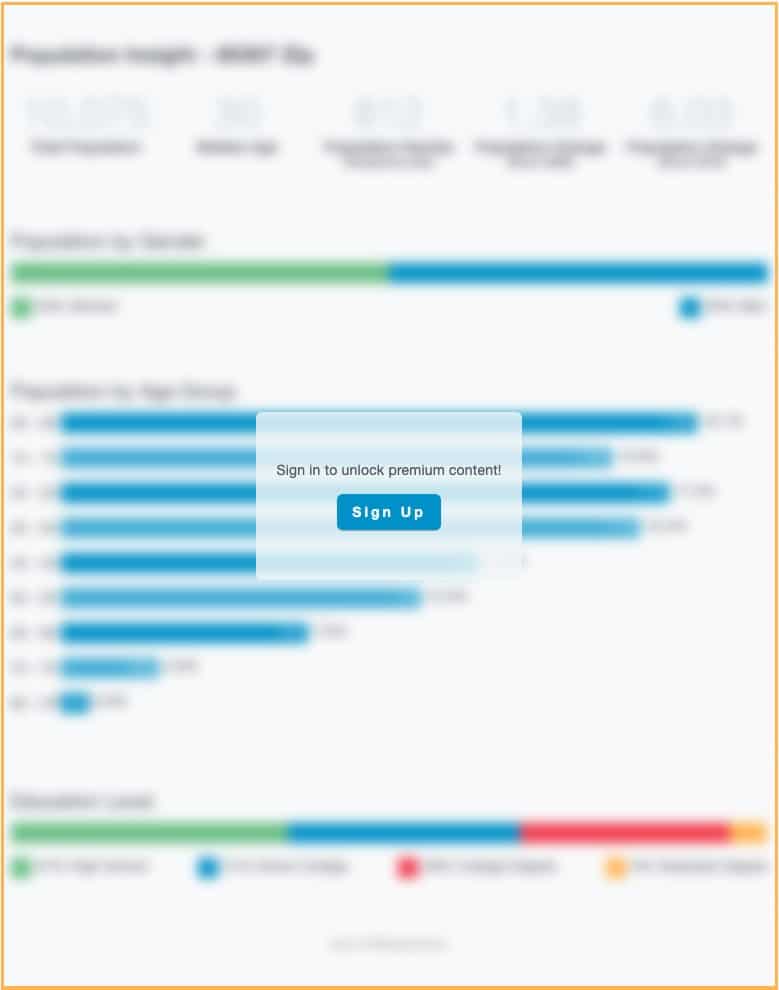
Premium listing data is additional, unique, and highly valuable data beyond what is provided from your MLS. It includes information such as:
- Walk score for the neighborhood
- Transit scores for the community
- Bike scores showing the biking infrastructure
- Links to nearby restaurants, grocery stores, and more
- Population insights: total population, median age, population density, etc.
- Community demographics, including:
- Gender
- Age group
- Education levels
- Average household size
- Median household income
- Average individual income
- Cost of living compared to national average
- Marital statuses
- Blue Collar vs White Collar Workers
- Type of Commute for those working.
- Average commute times
50% of the most successful sites that are on Premium require a visitor to register before seeing Premium Listing Data.
Tip: Consumers love this data, and it can be a strong reason to register on your site. We’ve seen people see a drastic increase in their lead conversion by simply turning on the Premium Listing Content lock. In other places on their site, they explicitly shows the type of additional content you get when you register.
Visitors for different real estate niches and parts of the country are unique, so make sure to test how the lock works on your site. Turn it on for a few weeks, then off for the same amount of time, then compare the results in Google Analytics. The key here is to understand your local target niche(s). If you do not test registration locks, you risk valuable data that could tell you that you’re losing visitors because a lock was put at the wrong time or for the wrong data.
Combining hard and soft locks
There are no clear winners for whether no registration locks, soft registration prompts, or hard registration locks drive more success.
For Premium users, the hard lock on Premium Content do appear to outperform from a pure lead generation perspective, once a website/agent has a strong hyperlocal brand established in their community.

Tip: Setting up a new website today or updating an existing site with little to moderate content? I would suggest starting with no locks or soft registration prompts until you have regular traffic, if you’re on the Essentials plan. If you’re a Premium customer, start with the Premium Content lock. Focus on adding local content and refining the niche that you work with.
Niches lead to riches. Your efforts will best be spent invested in refining your message to your niche. You’ll know when you “get it” when your referral clients and new sign-ups repeat back your specific niche to you as to why they selected you.
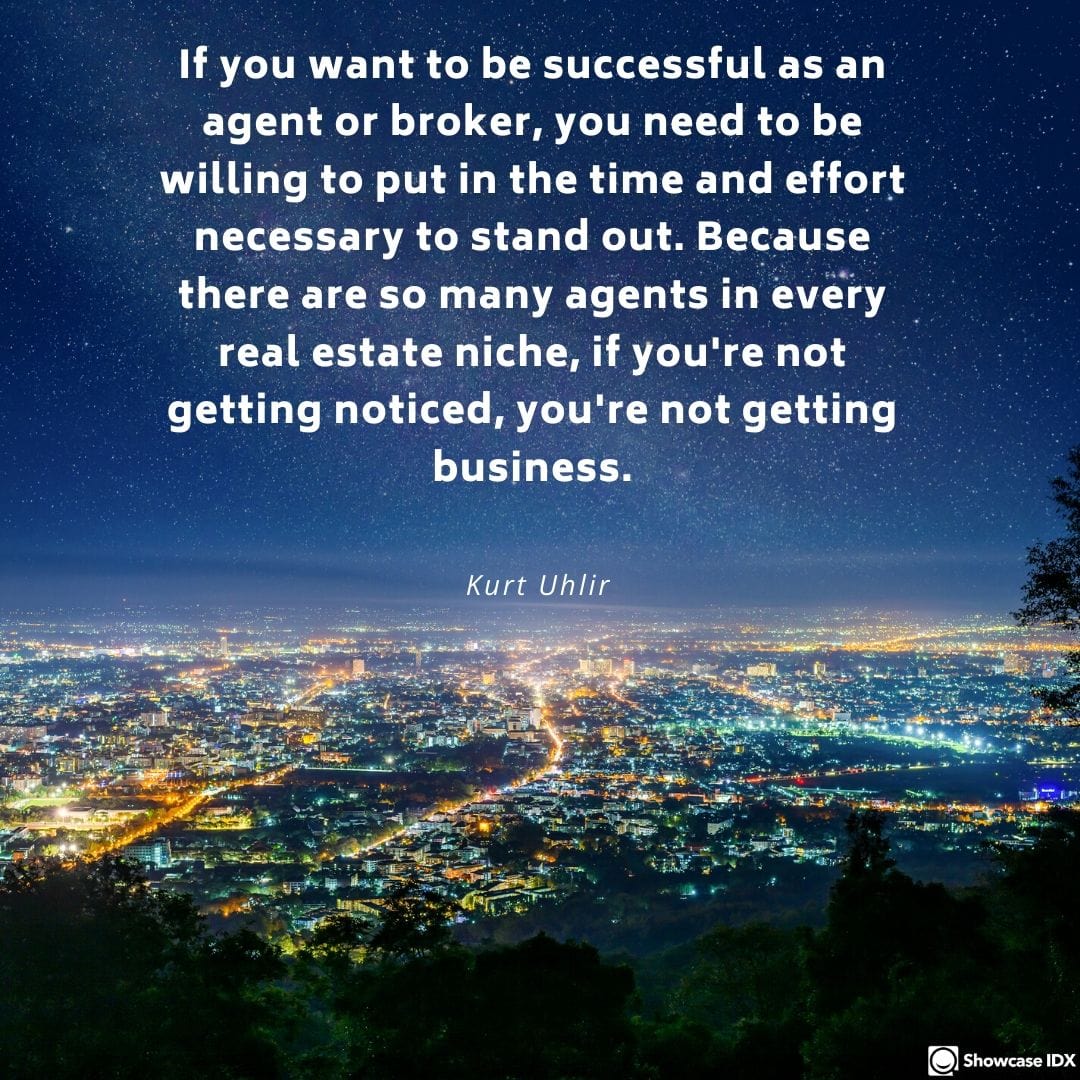
After you’ve found success from a traffic and conversation perspective in your niche, begin to test hard locks and monitor your analytics to see how your visitors respond.
Streamlined VS Advanced Search Types
Showcase IDX offers two different search types:
- Streamlined search is ideal for searching multiple MLSs and mobile
- Advanced search provides detailed advanced search features
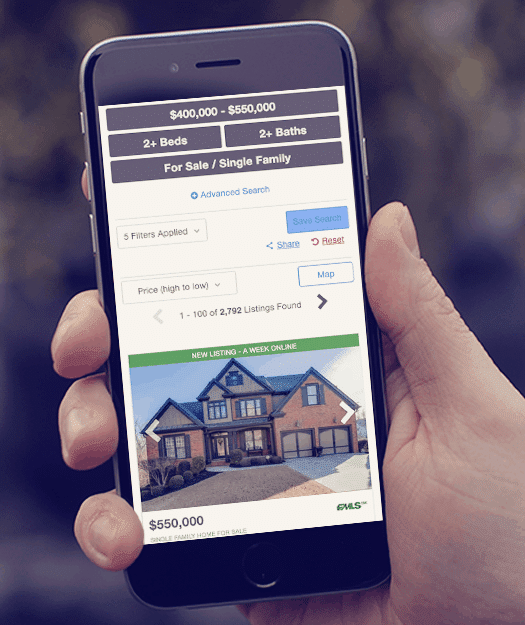
Of our 24 most successful real estate websites powered by Showcase IDX, 8 use our Streamlined Home Search and 16 use the Advanced Home Search.
However, the data within these sites and across our wider customer base does not show a clear winner.
The Streamlined and Advanced Home Search options are split almost equal when I examine the data based on 1) most traffic 2) most number of leads and 3) highest conversion of visitors to leads. The conclusion is that both perform well with consumers.
Tip: The choice of which search type should be a discussion between you and website developer. Ultimately, you want to make the choice based on the experience you’re trying to tailor for your clients.
Map style for home search
Choosing different map styles can be a great way to customize the look and feel of your real estate websites. It’s also one of the most underutilized features we see used.
Showcase IDX offers nine different map styles for Premium users. These home search map styles change the colors and fonts of all maps displayed on your website (e.g. regional maps, listing page, hotsheets, open houses, etc.)
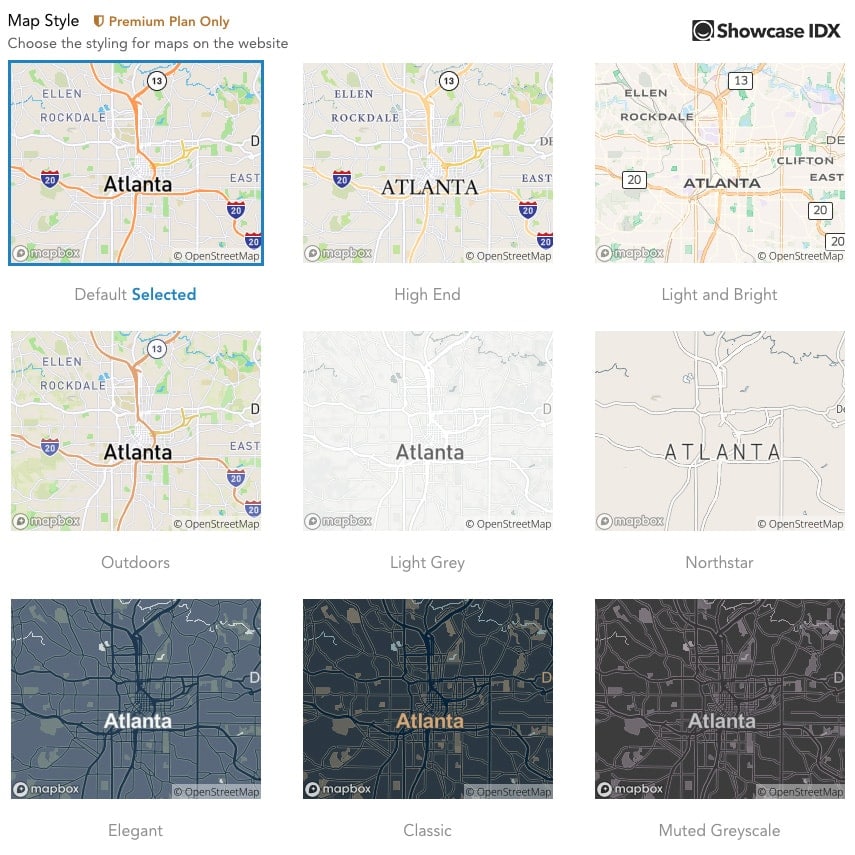
Only 4 of the 12 sites with access to this feature have chosen a map style different than the default.
However, 2 of the 3 most successful sites in terms of the total number of leads generated are using a Premium map style.
Tip: Test the feel of your site using “Light Grey”, “ Light and Bright”, “High End”, or “Outdoors”. If you want a stark contrast to other sites, we’ve seen success with “Elegant” as a style.
No budget or shared hosting
One consistent feature of all 24 of the most successful real estate websites from our customers is that none of them use a budget or shared host.
We understand the need to stay within budget. You have to get a good return on investment (ROI) on your marketing, and while a website with a great home search is required for any successful real estate marketing strategy, many agents cannot spend hundreds or even thousands of dollars per month on hosting their websites.
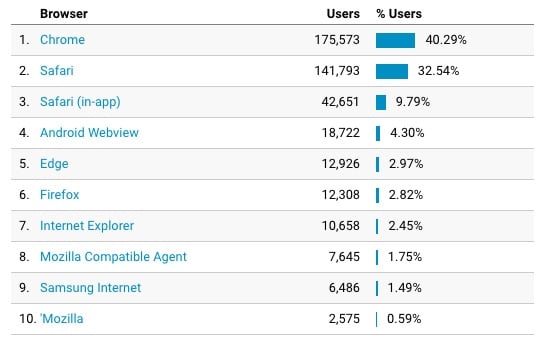
The great news is that you do not have to spend that much on hosting. Simply stay away from the super-cheap $5 – $10 per month shared hosts.
Some of the hosting options we see used by these top 24 sites include:
- WP Engine
- Dreamhost (pick a VPS or dedicated WordPress plan)
- Cloudways
- AgentFire (as part of their website offerings)
Tip: Want to know where a website is hosted? Enter the URL of a website into a tool like Who Is Hosting This? or Hosting Checker.
$30 – $200 themes
This is huge for any agent building their own website or any marketing agency wanting to scale their company serving Realtors and brokers.
17 of the top 24 most successful real estate website use themes they licensed for $30 – $200 one-time.
By using the View Source tip I shared earlier, you can see the code for any website. Search for “theme” and in most cases, you’ll be able to identify the theme used on the website. Look for a section like /wp-content/themes/THEMENAME/ Here’s an example from inspecting the code on my personal site:

You can then search google for the name for that theme using a search such as “THEMENAME wordpress theme” to learn more about the theme.
Tip: A few great themes to start with are Astra, Avada, and Enfold.
==> See our list of The 11 Best Word Press Themes for Real Estate websites.
Conclusions to Real Estate Website Success
Okay, every smart marketer knows that an agent has to have their own real estate website, independent from your Broker’s site to be successful. Why? Besides the “leakage” issue we discussed earlier, according to NAR, agents change brokerages every 4 to 5 years on average.
The two most valuable assets to growing your real estate business over time are 1) your personal brand and 2) your contacts/relationships.
Having a great real estate website that your clients will actually use is the single most valuable piece of marketing technology (Martech) that you can invest in. It supports both your personal brand and puts you in control of the your clients’ information.

Is it worth a few hundred dollars and a time investment to build your own site to enjoy these benefits? Of course, it is. This is your business!
The sooner you launch your site, the sooner you’ll reap the benefits.
The tips in this guide will give you a jumpstart on building out your website or upgrading your current one.
Showcase IDX is the engine that powers the most effective real estate agent, team and brokerage websites.
Want to build your own site or already have a developer? Start your free trial of Showcase IDX today.
Need help getting started? Choose one of our approved partners to guide you through building a stunning website to grow your business this year.





